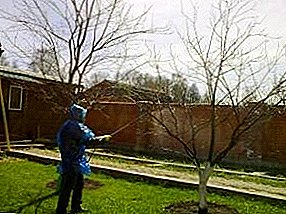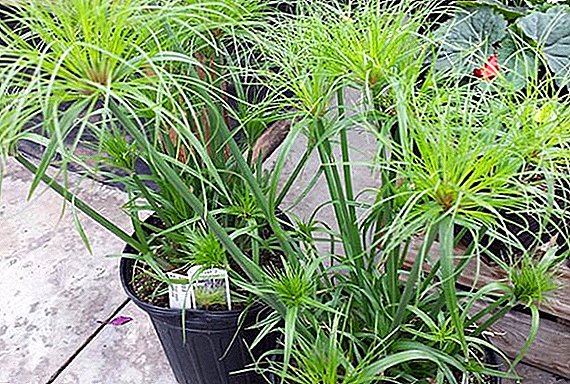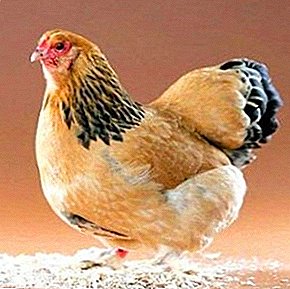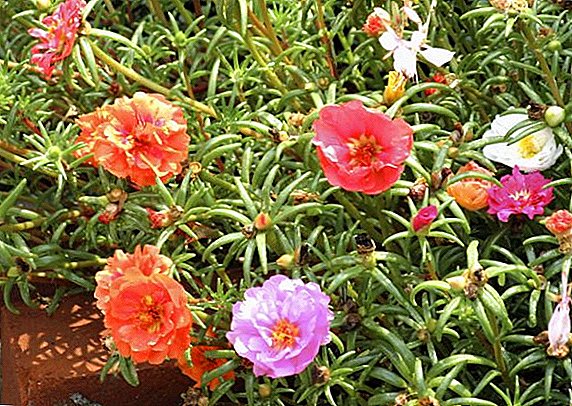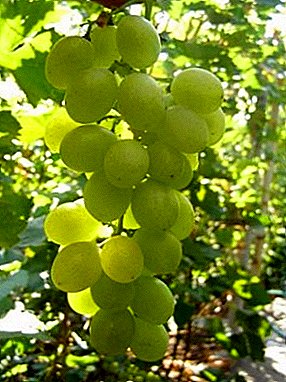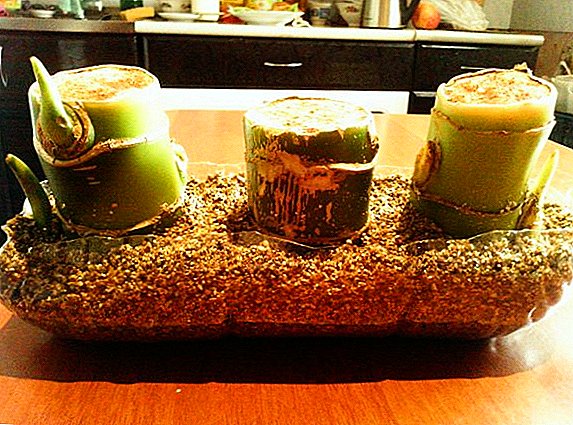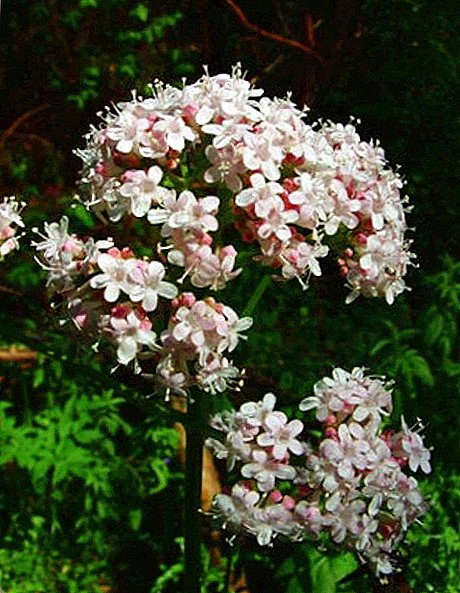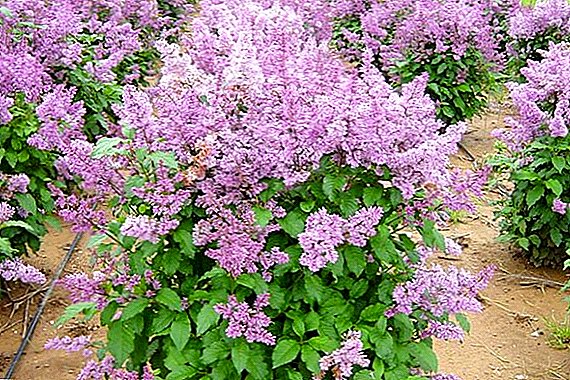 Lilac is a shrub plant actively used in landscape design and decoration of sites, widely known for its long and abundant flowering. It is noted for its drought tolerance, light-loving and frost resistance. Life expectancy is about 90 years. This article, first of all, contains exhaustive information about Hungarian lilacs, its varieties, planting and caring for it and methods of its reproduction.
Lilac is a shrub plant actively used in landscape design and decoration of sites, widely known for its long and abundant flowering. It is noted for its drought tolerance, light-loving and frost resistance. Life expectancy is about 90 years. This article, first of all, contains exhaustive information about Hungarian lilacs, its varieties, planting and caring for it and methods of its reproduction.
Botanical description
The height of an adult bush is about 5 meters. The branches of young lilac - brown or dark green, have short hairs and glisten in the sun. The branches of one-year-old lilac become red-gray, in the future they acquire a resistant gray color.
The leaves are oblong-elliptical in shape, sometimes elongated-ovate, with a dark green shade on the upper side, smooth to the touch, with short cilia along the edges. The lower part of the leaves is pale, naked, has a bluish tint and solid edges.  The length of the petioles is of the order of 1-1.5 cm. The buds have the shape of a tetrahedron, elongated, their length is of the order of 1 cm.
The length of the petioles is of the order of 1-1.5 cm. The buds have the shape of a tetrahedron, elongated, their length is of the order of 1 cm.
Did you know? The lilac received its generic name in honor of one of the characters of ancient Greek mythology, the syadi naiad.
Speaking of Hungarian lilac, it is impossible not to betray the description of its flowers, which are located crowded, as a rule, have a light purple hue and a pleasant fragrant aroma. The flowers form buds, the length of which sometimes reaches 10-22 cm.
Petals of flowers have an ovoid shape, slightly directed to the sides or raised upwards.  Seeds have a red-brown color. The fruit is a bare cylindrical box with a length of 1 cm. The flowering period lasts 20-25 days, usually in June. Lilac fruiting in August.
Seeds have a red-brown color. The fruit is a bare cylindrical box with a length of 1 cm. The flowering period lasts 20-25 days, usually in June. Lilac fruiting in August.
Popular forms and types
Lilac has many different species:
- Common lilac - medium shrub that can sometimes reach 7 meters. Blossoms large (up to 25 cm) tassels with a strong aroma, light lilac or white.
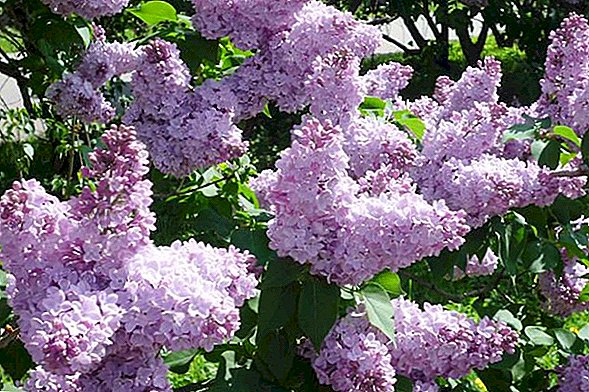
- Lilac meier - shrub whose height does not exceed 1.5 m. Its inflorescences consist of fairly small flowers, usually painted in a light lilac-pink shade. Inflorescence length - up to 10 cm

- Shaggy lilac - shrub medium in size, with quite large (up to 15 cm) leaves of the inflorescence within 20-25 cm, consist of medium sizes of pink-purple flowers.
 Persian lilac - the height of this lilac is about 3.5 m. It has flowers of a light purple shade, medium size. It has an unusual flavor.
Persian lilac - the height of this lilac is about 3.5 m. It has flowers of a light purple shade, medium size. It has an unusual flavor.
- Drooping lilac - medium shrub whose height does not exceed 3 m. The flowers of this species are remarkable in that they are two-colored - on the outside pinkish with a red tint and almost white inside.

Did you know? In astrology, lilac is associated with the sign of the calf.
As for the Hungarian lilac, then in gardening there are two common forms of this type:
- Pale (Syringa josikaea palida), which has flowers of pale purple hue.

- Red (Syringa josikaea rubra), which differs reddish flowers.

Necessary conditions for growing
The simplicity of this shrub worthy of admiration. In principle, it is able to tolerate both drought and humidity, can cope with a lack of light and with excessive gas pollution of the air, can withstand temperatures down to -40 ° C.
However, the newly planted shrub, alas, will require a special approach in choosing the place of cultivation.
You will probably be interested to learn about how to properly plant and grow Persian lilacs in the garden.
Location and lighting
The ideal place would be a sufficiently illuminated area, closed from a strong wind. Low, swampy and flooded places in the autumn and early spring will not be suitable for planting young lilacs, since even a short stagnation of water can cause the dying off of the roots of young shrubs. 
Soil requirements
The soil must be moderately moist, have a high fertility index, be well drained and have a high content of humus.
A big plus will be the planting of this shrub in slightly acidic or neutral soil with a low standing of groundwater, which will allow your plant to develop in all its glory.
Planting seedlings
Planting lilac is not much different from planting any other shrub, but there are several features that are worth paying special attention to.
Timing
The best period for planting Hungarian lilac will be the period from the second half of July to the beginning of September. This is due primarily to the fact that the biological characteristics of the plant suggest the intensification of growth processes during this period.
If the planting is done in late autumn or spring, then, most likely, the bushes will not give any increase at all in the first year due to the fact that they will be forced to fight against adverse environmental conditions. 
Technology
It is best to plant this plant in cloudy conditions or in the afternoon when the sun is setting. When choosing planting material should pay special attention to the roots, which should have a well-branched structure and dimensions of the order of 25-30 cm.
The landing pit should be 45x45x45 cm in the case of planting in moderately fertile soil, and deeper - 90x90x90 cm, if it is poor sandy soil. The base should consist of a mixture of compost and wood ash, it is also possible to add a small amount of superphosphate.
Next is to install the plant in the central part of the pit, evenly distributing the roots around its perimeter and gently cover it with earth. In the final, the soil should be compacted. 
Hungarian lilac care
After planting, it is worthwhile to produce abundant watering, and the soil around it should be mulched with the help of fallen leaves, peat or humus in a layer 6-8 cm thick. 6-10 cm
In the first year, the young plant will not require special feedings, but starting from the second, it will be necessary to apply nitrogenous fertilizers at the rate of 55 g of urea per planting during one calendar year.
Fertilizing with organic fertilizers is also possible. Ideal for any manure - a few buckets on one bush for the summer season should be enough. In the autumn period, it is possible to apply complex phosphate fertilizer.
Important! A good alternative to the above feedings is fertilizer with ash. For its preparation it is necessary to mix 250 g of ash with a bucket of water.
During the flowering period, watering should be done as often as possible, especially during hot periods of the year. Trimming during the first few years after planting is optional.  But, after it will be necessary to form the "skeleton" of the future bush - 5-10 of the most successfully located branches. The rest must be pruned.
But, after it will be necessary to form the "skeleton" of the future bush - 5-10 of the most successfully located branches. The rest must be pruned.
Sanitary pruning and thinning are mainly performed in early spring, but if you see this as a necessity, this manipulation is allowed throughout the growing season.
Wintering features
As noted earlier, the Hungarian lilac - the plant is quite cold-resistant and is able to transfer the temperature drop to -40 ° C. But if young saplings do not prepare properly for wintering, the next year you may well lose your bushes.
Before the onset of the first frost they should be covered with a layer of peat or fallen leaves up to 10 cm thick.
Important! Shelter can be removed during the period when the average daily temperature exceeds +5WITH.
Other breeding methods
Reproduction of Hungarian lilacs is possible by cuttings, grafting or with the help of seeds. The last way often reproduces wild lilac.  Sowing seed is usually done in the fall or spring after stratification of seeds at a temperature of 2-5 ° C, lasting up to 2 months.
Sowing seed is usually done in the fall or spring after stratification of seeds at a temperature of 2-5 ° C, lasting up to 2 months.
As for reproduction by vaccination, common lilac, common privet or any other type of lilac can serve as a rootstock for Hungarian lilacs. Inoculation is performed by the method of dormant bud or cutting.
Lilac is an excellent plant for anyone who wants to start landscaping or already has enough experience in this business. If you plant this bush in the current season, then in the next one it will start to delight you with the first color. And therefore do not delay this matter indefinitely.




 Persian lilac - the height of this lilac is about 3.5 m. It has flowers of a light purple shade, medium size. It has an unusual flavor.
Persian lilac - the height of this lilac is about 3.5 m. It has flowers of a light purple shade, medium size. It has an unusual flavor.



